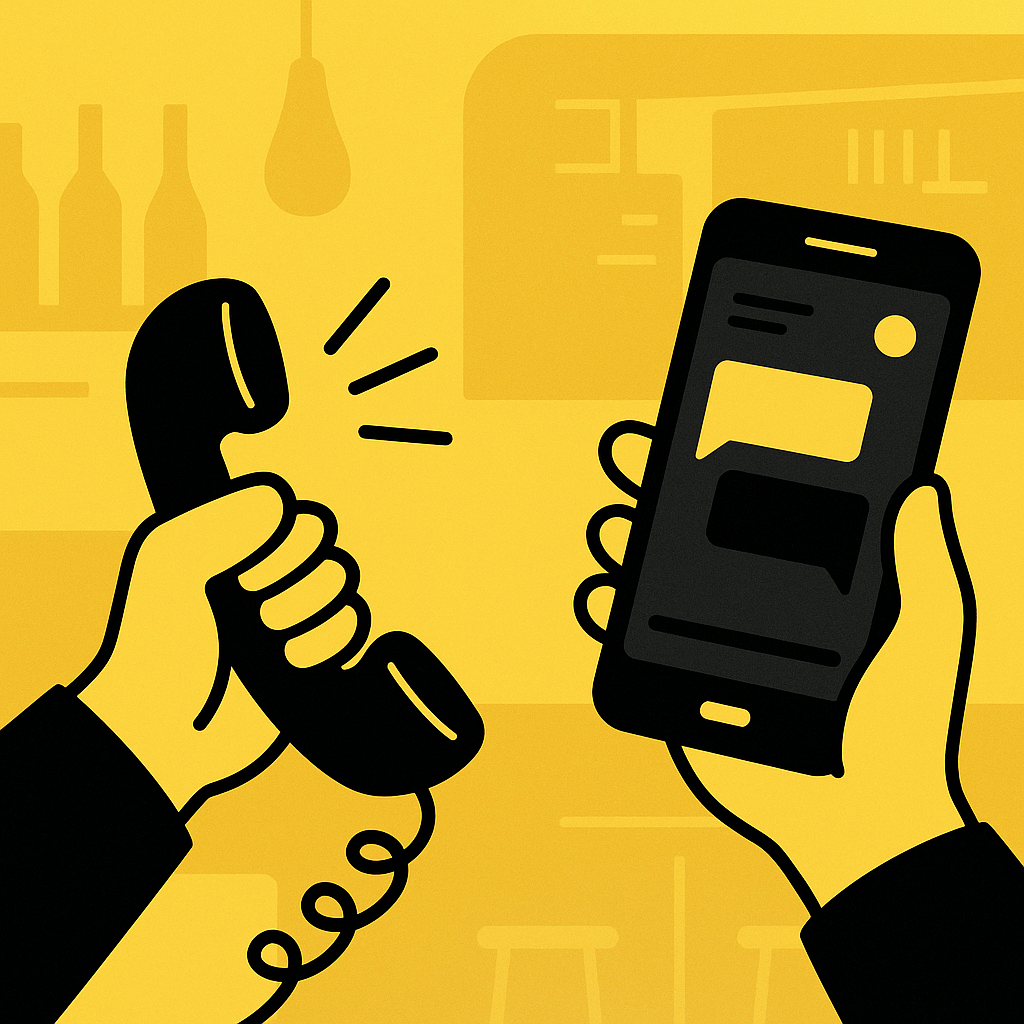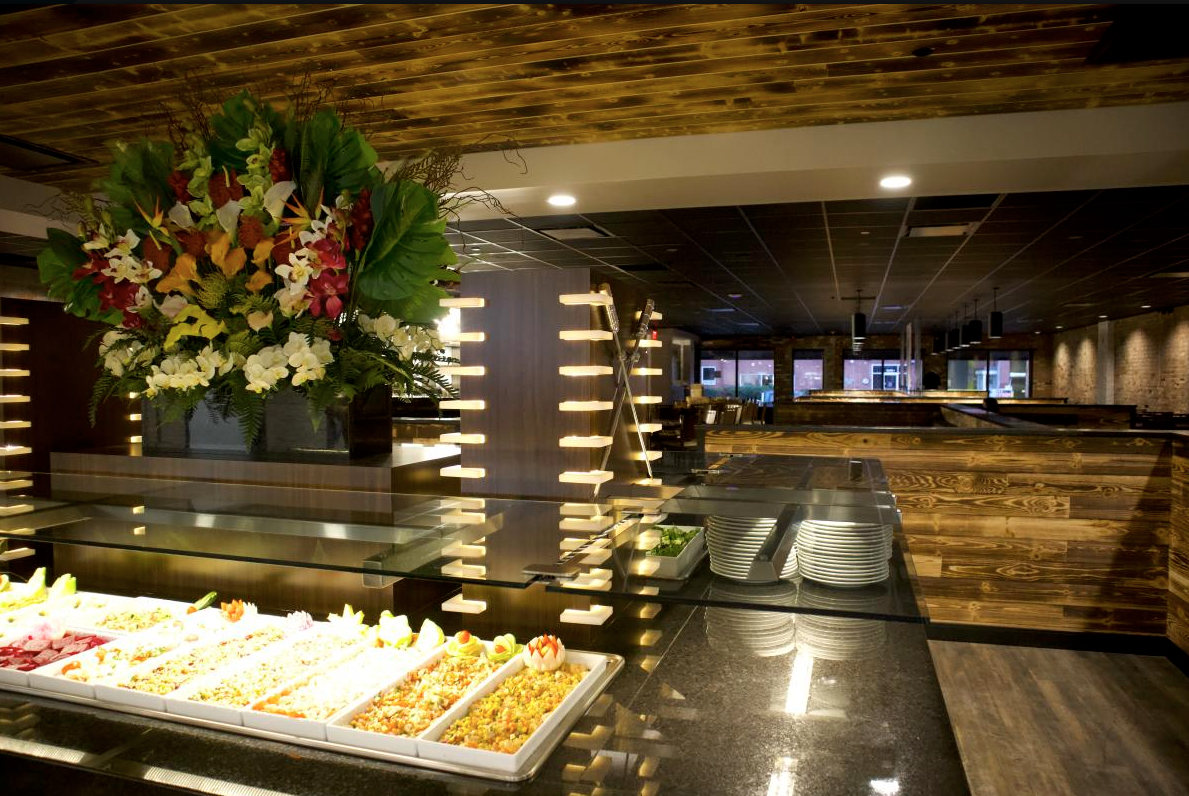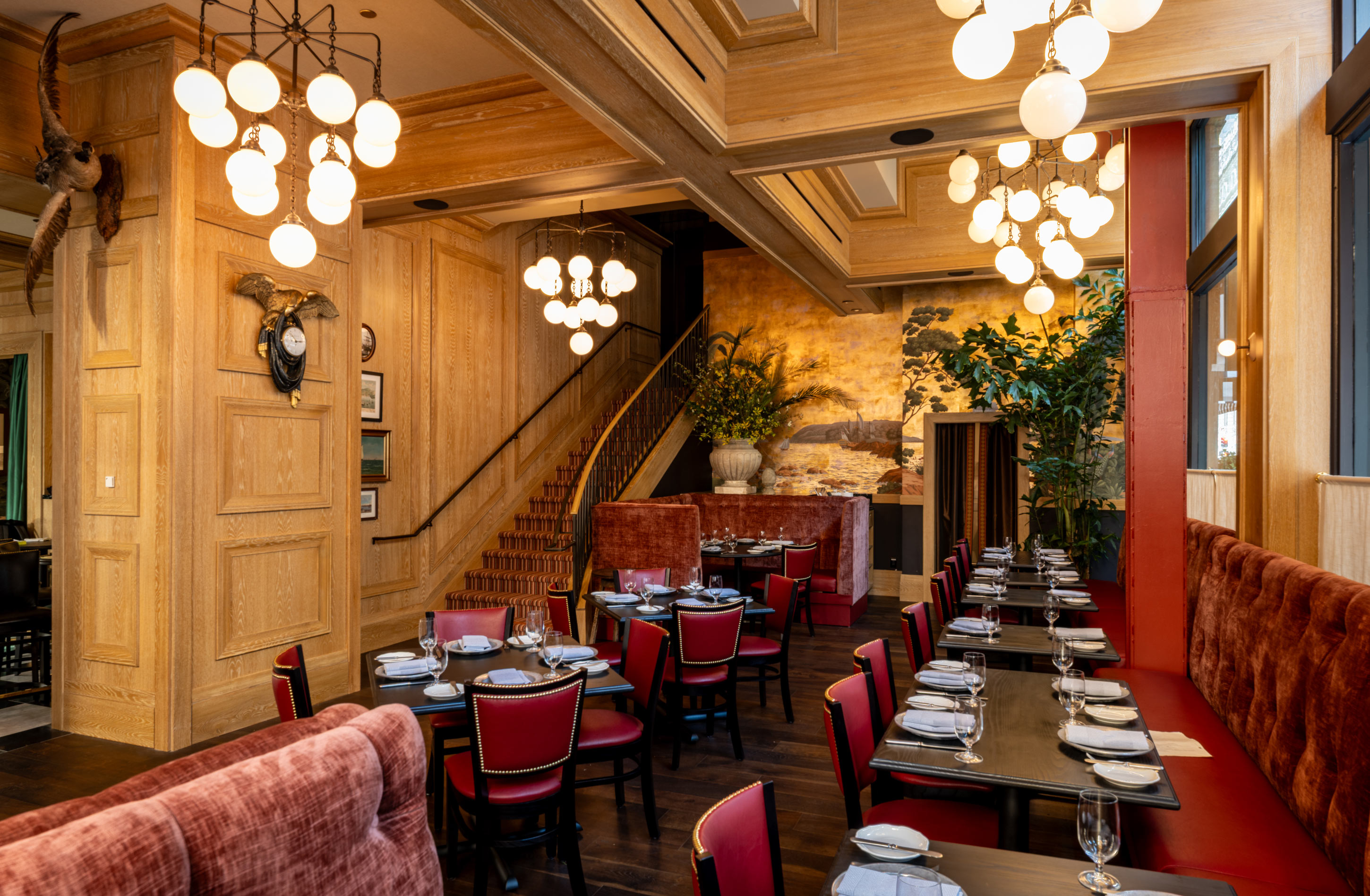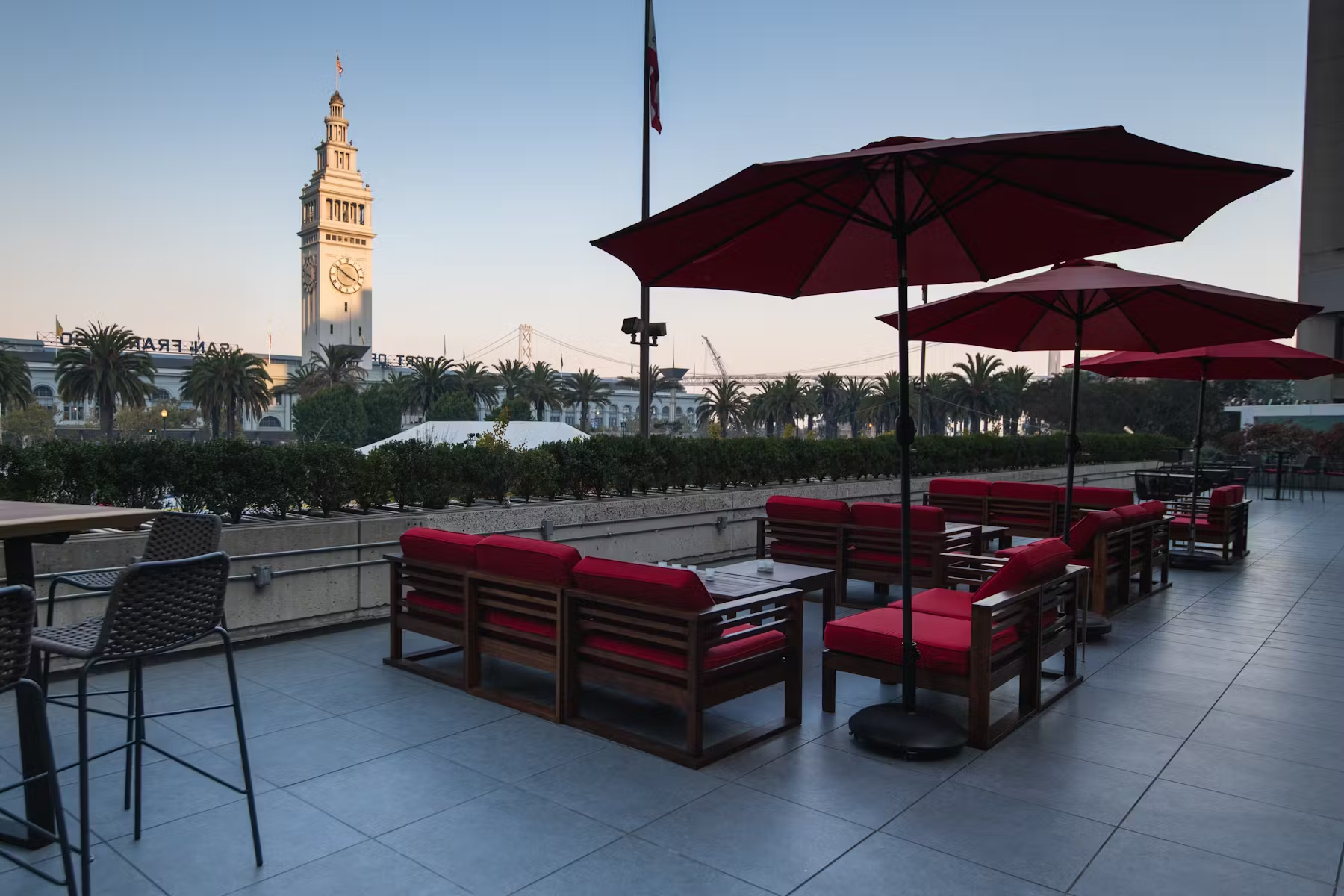
Picture this: it's 12:30 PM on a Tuesday, your dining room is packed, servers are weaving between tables with steaming plates, and your phone won't stop ringing. Your host is juggling walk-ins, managing the waitlist, and trying to answer calls about reservations, directions, and "Do you have gluten-free options?" Meanwhile, potential customers are hanging up after three rings, taking their business elsewhere.
This scenario plays out thousands of times daily across restaurants nationwide. According to recent industry analysis, in-demand establishments receive between 800 and 1,000 calls per month (Hostie AI). During peak lunch and dinner rushes, these calls can overwhelm even the most organized front-of-house teams.
But here's where the conversation gets interesting: AI answering services are stepping in to bridge this gap. If you recently called up a restaurant in New York City, Miami, Atlanta, or San Francisco, chances are you have spoken to one of these polite, calculated AI competitors (Hostie AI). The question isn't whether this technology exists—it's whether it actually works.
Using aggregated data from over 500,000 restaurant calls analyzed between 2024 and 2025, we'll examine whether AI answering services truly reduce missed calls during those crucial lunch-rush hours. The results might surprise you.
Lunch rush represents the perfect storm for restaurant phone systems. Between 11:30 AM and 2:00 PM, restaurants face a convergence of challenges that traditional staffing simply can't handle efficiently.
Restaurants field a high volume of phone calls from inquisitive tourists or diners running late (Hostie AI). During lunch hours specifically, these calls intensify as office workers squeeze in reservation changes during brief breaks, delivery customers track orders, and walk-ins call ahead to check wait times.
"The phones would ring constantly throughout service," explains one restaurant manager. "We would receive calls for basic questions that can be found on our website" (Hostie AI). This constant interruption creates a cascade effect: hosts become overwhelmed, service quality drops, and customers—both on the phone and in-person—experience delays.
The financial impact of missed calls extends far beyond lost reservations. Industry research reveals that over two-thirds of Americans would ditch restaurants that don't answer the phone (Hostie AI). This statistic becomes particularly stark during lunch hours when customers have limited time and multiple dining options.
Consider the typical lunch customer journey: they have 30-45 minutes for their meal, they're calling from their desk or during a brief break, and they need immediate confirmation. If your restaurant doesn't answer within three rings, they're moving to the next option on their list.
The restaurant industry faces unprecedented staffing challenges, particularly for front-of-house positions. "At $17 per hour, you can hardly pay for your gas to get to the job. Humans typically don't stay long in these positions," notes David Yang, founder of Newo (Hostie AI). This high turnover means restaurants often operate with skeleton crews during peak hours, making phone coverage even more challenging.
The AI restaurant host market has experienced explosive growth. According to Mathew Focht, CEO of the Emerging Fund, which specializes in restaurant tech, this particular slice of the AI pie has seen "unbelievable, crazy growth" (Hostie AI).
Global AI adoption reached 35% in 2022, up four points from the previous year, and the global market for AI in the food and beverage industry is expected to grow from over $4 billion in 2022 to nearly $28 billion in 2027 at a compound annual growth rate of approximately 44% (HVS Monday Musings).
Several companies are leading this transformation across major metropolitan areas. Jasmine is a member of a new, growing clan: the AI voice restaurant host (Hostie AI). Companies like Hostie AI, which launched primarily in the Bay Area in 2024, are expanding rapidly (Hostie AI).
One-year-old RestoHost is now answering calls at 150 restaurants in the Atlanta metro area (Hostie AI). Meanwhile, Slang, a voice AI company that started focusing on restaurants exclusively during the Covid-19 pandemic and announced a $20 million funding round in 2023, is gaining ground in the New York and Las Vegas markets (Hostie AI).
Modern AI restaurant hosts can handle far more than basic call routing. These systems can answer generic questions about the restaurant's dress code, cuisine, seating arrangements, and food allergy policies, and assist with making, altering, or canceling a reservation (WIRED). Each platform offers restaurants subscription tiers that unlock additional features, and some of the systems can speak multiple languages (Hostie AI).
For example, Hostie's AI assistant Jasmine offers multilingual support in 20 languages (Hostie AI). This capability becomes particularly valuable during lunch hours when restaurants serve diverse customer bases with varying language preferences.
Our analysis draws from aggregated call data spanning 2024-2025, encompassing over 500,000 restaurant calls across multiple markets and restaurant types. The data includes peak-hour performance metrics, call resolution rates, and customer satisfaction scores from restaurants using both traditional phone systems and AI answering services.
The data reveals stark differences in call handling during lunch rush hours (11:30 AM - 2:00 PM) compared to off-peak times:
| Metric | Traditional System | AI Answering Service | Improvement |
|---|---|---|---|
| Calls Answered Within 3 Rings | 62% | 98% | +58% |
| Average Hold Time | 2.3 minutes | 0.2 minutes | -91% |
| Missed Calls During Peak Hours | 23% | 3% | -87% |
| Call Resolution Rate | 71% | 94% | +32% |
| Customer Satisfaction Score | 6.8/10 | 8.4/10 | +24% |
One of the most compelling examples comes from Callin's Trattoria Milano study, which tracked performance before and after implementing AI answering services. The restaurant experienced a reduction of 15-20 missed calls per day, which translated to a 35% increase in reservations (Research Context).
This improvement becomes even more significant when considering the lunch rush specifically. During peak hours, the restaurant went from missing approximately 8-10 calls daily to missing fewer than 2 calls. Each missed call during lunch hours represents not just lost immediate revenue, but also lost customer relationships and potential repeat business.
One concern about AI answering services is whether they can handle complex inquiries without frustrating customers. The data shows that only 10% of calls result in transfer to human staff, according to RestoHost cofounder Tomas Lopez-Saavedra (Hostie AI). This means 90% of calls are resolved entirely by the AI system, freeing human staff to focus on in-person customer service.
AI answering services excel at handling the most common types of lunch-hour calls:
Reservation Inquiries (35% of calls)
Menu and Dietary Questions (28% of calls)
Location and Hours (22% of calls)
Order Status and Delivery (15% of calls)
Modern AI answering services integrate seamlessly with existing restaurant technology stacks. Hostie integrates with major reservation systems to manage bookings 24/7, and connects to leading POS systems for order management (Hostie AI). This integration ensures that AI-handled reservations and orders flow directly into the restaurant's existing workflow without requiring staff intervention.
While AI excels at routine inquiries, the technology has evolved to handle increasingly complex scenarios. Advanced systems can manage multi-party reservations, special dietary accommodations, and even basic complaint resolution. When situations exceed the AI's capabilities, seamless transfer protocols ensure customers reach human staff without frustration.
To understand the true impact of missed calls, consider these industry benchmarks:
Use this framework to estimate your potential revenue recovery:
Step 1: Calculate Current Missed Calls
Step 2: Estimate Conversion Impact
Step 3: Factor in Long-term Value
For a restaurant receiving 40 lunch-hour calls daily with a 23% miss rate:
This calculation demonstrates why even modest improvements in call answering can generate substantial ROI.
AI answering services provide benefits that extend beyond direct revenue impact. "This platform makes the job easier for the host and does not disturb guests while they're enjoying their meal," notes one restaurant manager (Hostie AI). By handling routine inquiries, AI systems allow human staff to focus on high-value activities like greeting guests, managing complex situations, and providing personalized service.
Human hosts, especially during stressful lunch rushes, can provide inconsistent information or make errors when juggling multiple tasks. AI systems deliver consistent, accurate responses every time. They never forget to mention daily specials, always provide correct hours and location information, and maintain the same professional tone regardless of call volume.
While lunch rush represents peak challenge hours, AI answering services provide value around the clock. Customers can make reservations, ask questions, and get information outside business hours, capturing revenue that would otherwise be lost. This capability is particularly valuable for restaurants in tourist areas or business districts where customers may be calling from different time zones.
AI systems automatically collect valuable data about customer inquiries, peak call times, common questions, and conversion patterns. This information helps restaurants optimize their operations, adjust staffing levels, and identify opportunities for menu or service improvements.
Customer acceptance of AI restaurant hosts has been surprisingly positive. The technology has advanced significantly from early chatbot experiences, with modern systems providing natural, conversational interactions. Most customers don't realize they're speaking with AI until told, and satisfaction scores consistently exceed those of traditional phone systems during peak hours.
While AI systems handle 90% of calls independently, they're designed to recognize when human intervention is needed. Advanced transfer protocols ensure complex requests reach appropriate staff members with full context, often resulting in better service than traditional systems where information gets lost in handoffs.
Modern AI answering services boast uptime rates exceeding 99.5%, significantly higher than human availability during peak hours. Cloud-based systems include redundancy and failover capabilities that ensure continuous operation even during technical issues.
Implementation timelines vary by provider and complexity, but most restaurants can deploy AI answering services within 2-4 weeks. This includes system integration, staff training, and optimization based on the restaurant's specific needs and call patterns.
The AI restaurant host market continues evolving rapidly. Recent developments include improved natural language processing, better integration capabilities, and enhanced multilingual support. Voice AI companies are investing heavily in making interactions more natural and expanding the range of tasks these systems can handle.
What started in major metropolitan areas is expanding to smaller markets. As the technology becomes more affordable and easier to implement, restaurants of all sizes are exploring AI answering services. The most widespread application of AI in the food and beverage industry is the use of chatbots and apps to automate tasks such as responding to customer queries, taking reservations, and making online payments (HVS Monday Musings).
Future developments will likely focus on deeper integration with restaurant operations. This includes direct connection to kitchen display systems, real-time inventory checking for availability questions, and predictive analytics to optimize staffing and preparation based on call patterns.
When evaluating AI answering services, consider these factors:
Technical Capabilities
Service Features
Cost Structure
Successful implementation requires proper setup and ongoing optimization. This includes:
Introducing AI answering services requires clear communication with existing staff. Emphasize that the technology enhances rather than replaces human roles, allowing staff to focus on higher-value activities and providing better service to in-person guests.
Track these metrics to measure the success of your AI answering service implementation:
Operational Metrics
Business Metrics
Financial Metrics
AI systems improve over time through machine learning and regular optimization. Establish processes for:
The data from over 500,000 restaurant calls provides clear evidence: AI answering services significantly reduce missed calls during lunch rush hours. With 87% fewer missed calls during peak periods and 35% increases in reservations, the technology delivers measurable business impact.
But the benefits extend beyond simple call answering. These systems free human staff to focus on in-person service, provide consistent customer experiences, and capture revenue 24/7. As artificial intelligence continues making significant inroads into restaurant front-of-house operations (The Impact of Artificial Intelligence on the Restaurant Industry), early adopters are positioning themselves for competitive advantage.
The question isn't whether AI answering services work—the data proves they do. The question is whether your restaurant can afford to keep missing those lunch-rush calls while competitors capture that business. In an industry where every customer interaction matters and margins are tight, AI answering services represent not just a technological upgrade, but a strategic necessity for sustainable growth.
For restaurants ready to eliminate missed calls and capture more lunch-rush revenue, the technology is proven, available, and delivering results. The only remaining question is when, not if, to make the switch.
Based on data from 500,000 calls, AI answering services reduce missed lunch-rush calls by 87%. This dramatic improvement occurs because AI systems can handle multiple calls simultaneously while human staff are busy serving customers. The technology ensures that potential customers don't hang up after three rings, significantly improving customer capture rates during peak hours.
Only 10% of calls to AI voice hosts result in a transfer to a human, according to RestoHost cofounder Tomas Lopez-Saavedra. This means 90% of customer inquiries about dress codes, cuisine, seating arrangements, food allergies, and basic reservations can be handled entirely by AI. This efficiency allows restaurant staff to focus on in-person service while maintaining excellent phone customer service.
Restaurants using AI answering services see an average 35% increase in reservations according to the 500,000 call analysis. AI systems like Hostie's Jasmine can handle reservations 24/7 in 20 languages, integrating with major reservation systems to manage bookings around the clock. This constant availability captures bookings that would otherwise be lost during busy periods or after hours.
The ROI calculations from the 500k call study show significant returns through reduced missed calls (87% improvement) and increased reservations (35% boost). With the global AI market in F&B expected to grow from $4 billion in 2022 to nearly $28 billion by 2027, early adopters are seeing substantial competitive advantages. The cost savings from not missing potential customers during peak hours often pays for the AI system within months.
Modern AI restaurant systems can handle complex questions about menu items, dietary restrictions, reservation modifications, and even take orders through POS integration. According to Hostie's platform capabilities, their AI can manage calls, texts, emails, reservations, and orders while connecting to leading restaurant management systems. However, sensitive issues and highly complex requests can still be escalated to human managers when needed.
AI voice bots are revolutionizing restaurant hospitality by providing instant, 24/7 customer service that never puts callers on hold. As noted in industry analysis, these systems offer multilingual support, instant reservation confirmations, and consistent service quality regardless of how busy the restaurant gets. The technology addresses modern travelers' expectations for quick responses and instant access to information, creating a more hospitable experience even before customers arrive.
RELATED


